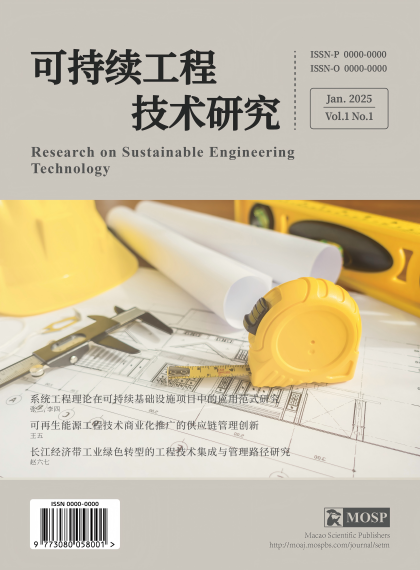摘 要:
随着城市化进程的加快,建筑废弃物成为影响可持续发展的重要问题。为提高建筑废弃物的资源化利用率,本研究探讨了数字孪生技术在该领域的应用路径。通过构建建筑废弃物资源化的数字孪生模型,可以实现对废弃物产生、回收、运输、处理和资源化的全过程监控与优化。本研究基于系统分析与案例研究方法,梳理了数字孪生技术在建筑废弃物资源化中的关键环节与应用场景,提出了一系列优化措施,包括提高废弃物处理效率、降低资源化成本以及预测资源化潜力。研究结果表明,数字孪生技术有助于提升建筑废弃物资源化效率,推动建筑行业向绿色和低碳方向发展。此研究不仅为技术创新提供了参考框架,同时也为政策制定和行业实践提供了理论支持。
关键词:数字孪生技术;建筑废弃物;资源化利用;监控与优化;绿色低碳发展
Abstract:
With the acceleration of urbanization, construction wastes have emerged as a significant issue affecting sustainable development. To enhance the resourceful utilization rate of construction wastes, this study explores the application paths of digital twin technology in this field. By constructing a digital twin model for the resourceful utilization of construction wastes, it is possible to achieve full-process monitoring and optimization of waste generation, recycling, transportation, treatment, and resourceful utilization. Based on systematic analysis and case study methods, this researchs (in English: "elucidates" or "clarifies" - here using "elucidates" for a more formal tone) the key links and application scenarios of digital twin technology in the resourceful utilization of construction wastes, and proposes a series of optimization measures. These measures include improving waste treatment efficiency, reducing resourceful utilization costs, and predicting resourceful utilization potential. The research results indicate that digital twin technology contributes to enhancing the efficiency of construction waste resourceful utilization and promoting the green and low-carbon development of the construction industry. This study not only provides a reference framework for technological innovation but also offers theoretical support for policy formulation and industry practices.
Keywords: Digital twin technology; Construction wastes; Resourceful utilization; Monitoring and optimization; Green and low-carbon development
--
